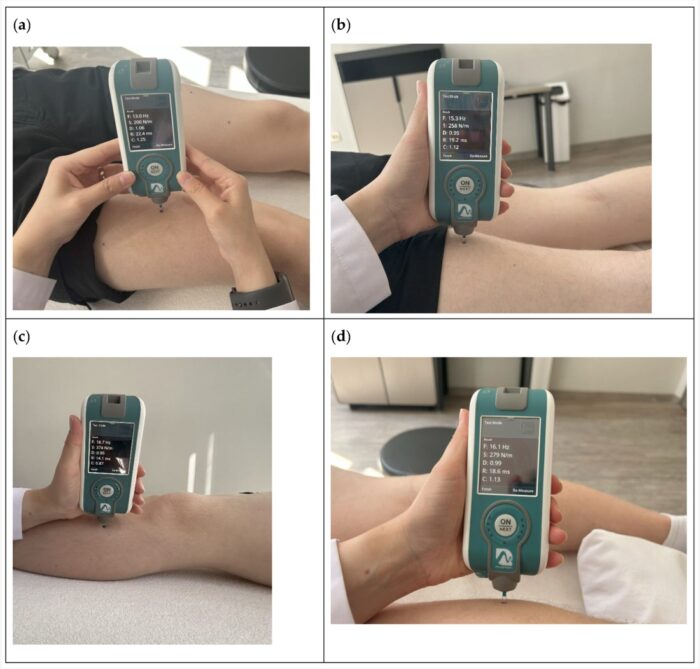Publications

Evaluation of the Viscoelastic Properties of Lower-Extremity Muscles of Pediatric Hemophilia Patients Using Myotonometric Measurements
Authors: Tugba Gonen 1, Serkan Usgu 1, Yavuz Yakut 1, Sinan Akbayram 2
Affiliations:
- Department of Physical Therapy and Rehabilitation, Faculty of Health Sciences, Hasan Kalyoncu University, Gaziantep 27000, Turkey
- Department of Pediatric Hematology-Oncology, Faculty of Medicine, Gaziantep University, Gaziantep 27310, Turkey
Journal: Children - February 2024, Volume 11, Issue 2, Article no. 229 (DOI: 10.3390/children11020229)
-
Field & Applications:
- Medical
- Pediatrics
- Musculoskeletal health
- Injury prevention
This study aimed to evaluate the viscoelastic properties of lower-extremity muscles in pediatric hemophilia (FVIII-IX) patients.
The study included 20 severe- and moderate-type right-dominant hemophilia patients diagnosed with hemophilia A-B and 20 healthy children. Viscoelastic properties (tone, stiffness, elasticity) of the lower-extremity muscles were measured using a MyotonPRO device.
The physical characteristics of the pediatric hemophilia patients (mean age: 11.9 ± 3.95 years) and the control group (mean age: 12.6 ± 3.41 years) were found to be similar. A difference was observed only in the elasticity of the right vastus lateralis (p < 0.05) by means of the viscoelastic properties of the lower-extremity muscles. The results were similar in other muscle groups (p > 0.05). The dominant-side vastus lateralis muscle elasticity (the ability of the muscle to regain its original shape after contraction or removal of an external force) of hemophilia patients was found to be lower compared to healthy children.
The fact that 45% of hemarthroses occur in the knee joint and that recurrent bleeding may affect the flexibility of the vastus lateralis, which is the main muscle within the quadriceps muscle group and responsible for the stabilization of the patella, can be associated with the study results.

Figure 1. Examples of muscles reference points for myotonometric assessment: (a) rectus femoris; (b) biceps femoris; (c) tibialis anterior; (d) gastrocinemius.
Keywords: hemophilia, tone, stiffness, elasticity, hemarthrosis, hematoma
In conclusion, our study is important because it is the first study to provide measurement results of the viscoelastic properties of lower-extremity muscles in patients with hemophilia with MyotonPRO. Decreased elasticity in the VL muscle in children with hemophilia can cause various knee-related problems. Problems in lower-extremity biomechanics, which will result in decreased lateral stabilization of the knee, will trigger recurrent joint bleeding. For this reason, clinicians should include evaluation and treatment options regarding knee stabilization and VL muscle elasticity in rehabilitation processes in order to minimize unavoidable deformities that may occur in older age groups.


